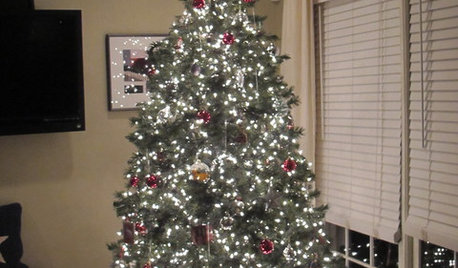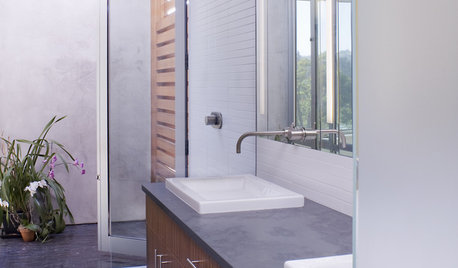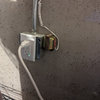2 pole GFCI breaker
cdclive
11 years ago
Related Stories

ENTRYWAYSNew This Week: 4 Smart-Storage Entryways
Architects and designers share details on their solutions for organized entryways and mudrooms uploaded recently to Houzz
Full Story
CONTRACTOR TIPSBuilding Permits: 10 Critical Code Requirements for Every Project
In Part 3 of our series examining the building permit process, we highlight 10 code requirements you should never ignore
Full Story
CHRISTMASHow to Light Your Christmas Tree Like a Pro
Give yourself frustration-free tree lighting this year — the trick is clever cord management
Full Story
BATHROOM DESIGNWarm Up Your Bathroom With Heated Floors
If your bathroom floor is leaving you cold, try warming up to an electric heating system
Full Story
KITCHEN DESIGNThe Cure for Houzz Envy: Kitchen Touches Anyone Can Do
Take your kitchen up a notch even if it will never reach top-of-the-line, with these cheap and easy decorating ideas
Full Story
REMODELING GUIDESWisdom to Help Your Relationship Survive a Remodel
Spend less time patching up partnerships and more time spackling and sanding with this insight from a Houzz remodeling survey
Full Story
BATHROOM DESIGNDreaming of a Spa Tub at Home? Read This Pro Advice First
Before you float away on visions of jets and bubbles and the steamiest water around, consider these very real spa tub issues
Full Story
GREEN BUILDINGGoing Solar at Home: Solar Panel Basics
Save money on electricity and reduce your carbon footprint by installing photovoltaic panels. This guide will help you get started
Full Story
BATHROOM DESIGN10 Amenities to Make Your Bathroom Extraordinary
Go beyond the basics for a luxury bathroom experience, with extra-special options starting at only $25
Full Story
LIFEHow to Prepare for and Live With a Power Outage
When electricity loss puts food, water and heat in jeopardy, don't be in the dark about how to stay as safe and comfortable as possible
Full StoryMore Discussions










brickeyee
hendricus
Related Professionals
Annandale General Contractors · Ashtabula General Contractors · Augusta General Contractors · Brighton General Contractors · Green Bay General Contractors · Mount Vernon General Contractors · Orangevale General Contractors · Port Saint Lucie General Contractors · River Edge General Contractors · Chanhassen Solar Energy Systems · Syosset Solar Energy Systems · Yucca Valley Solar Energy Systems · Birmingham Home Automation & Home Media · Kissimmee Home Automation & Home Media · Wilmington Home Automation & Home MediaRon Natalie
cdcliveOriginal Author
bus_driver
cdcliveOriginal Author
Ron Natalie
cdcliveOriginal Author
brickeyee